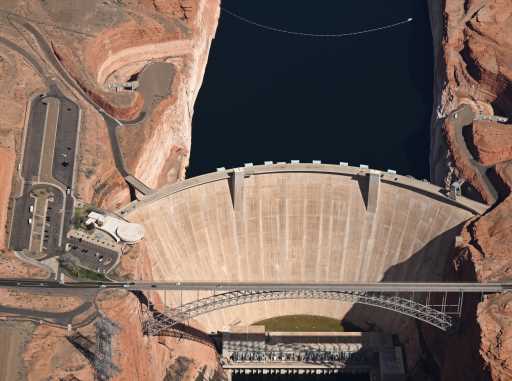While state and federal officials, farmers and the heads of Native American tribes, work intensely to conserve water from the drying Colorado River one term appears more often than probably any other: the acre-foot.
That’s generally how water managers measure the vast quantities of water over which they’re negotiating. The Colorado River is so vast, its basin so populous, that officials are bartering to save millions of acre-feet each year.
But what is an acre-foot?
In short, it’s a volumetric measurement of water, enough to cover an acre of land with a foot of water. About 326,000 gallons or as much water as two average families of four use in a year to drink, clean dishes, wash their clothes, shower, flush their toilets and more. That statistic varies depending on location, however. Families in Las Vegas, for example, use less water each year than those in Denver.
An acre-foot is enough to cover the football field of Empower Field at Mile High with about 11 inches of water. In Ball Arena, an acre-foot is enough to fill the Colorado Avalanche’s hockey rink with more than 2.5 feet of water or the Denver Nuggets’ basketball court with more than 9 feet.
Assuming a 53-foot semitrailer has a volume of about 3,800 cubic feet, that’s enough to hold more than 28,400 gallons of water. So an acre-foot would fill nearly 11.5 of those trailers.
But a single-acre foot isn’t nearly enough to fully visualize the scope of the savings needed to keep the Colorado River at a healthy level. Federal officials asked last summer that the seven states in the river basin work to save between 2 million and 4 million acre-feet from the river each year.
And in mid-May those seven states came together with a proposal to save 3 million acre-feet over the next three years.
That’s 978 billion gallons of water. That’s nearly 1.5 million Olympic swimming pools worth of water or about the full volume of Florida’s Lake Okeechobee.
How else can you wrap your mind around that much water? Think of the City of Denver, which spans 155 square miles or 99,200 acres. That 3 million acre-feet is enough to cover all of Denver’s land in more than 30 feet of water.
Depending on the year, 3 million acre-feet would be enough to completely shut of the flow of the Colorado River for about three months.
Although, determining just how much water flows through the river in a given year is becoming more difficult.
A century ago water managers from each state and federal officials assumed the Colorado River would flow with an average of up to 18 million acre-feet a year. But the math on which they drew those assumptions was based on a wetter-than-average period for the river. More realistically the river historically flowed between 10 million and 14.5 million acre-feet a year, one hydrologist figured in 1928. Depending on the year, 3 million acre-feet would be enough to completely shut of the flow of the Colorado River for about three months.
Between 1906 and 1999 the river’s flows dropped by about 20%, one 2017 study shows. And it has sunk even lower since then. What began as a drought in 2000 then transformed into what scientists called a megadrought.
Now, water experts repeatedly warn that those conditions have been exacerbated and made permanent by climate change. The scenario is called aridification, the drying of the American West, and officials throughout the region must find new ways to conserve millions of acre-feet while also learning to shift with an ever-shifting climate.
Get more Colorado news by signing up for our Mile High Roundup email newsletter.
Source: Read Full Article
-
Keir Starmer faces growing Labour revolt over his Middle East stance
-
Forget tax cuts, AMANDA PLATELL on the rise of the power bob
-
Russia hits Ukraine power grid causing blackouts, gains ground in east
-
Survivors of Maui’s wildfires return home to blackened ruins as death toll rises to 67 – The Denver Post
-
Dad on the run after being sentenced to Putin’s gulag over Russian daughter, 13, drawing ‘No to War’ picture at school | The Sun

